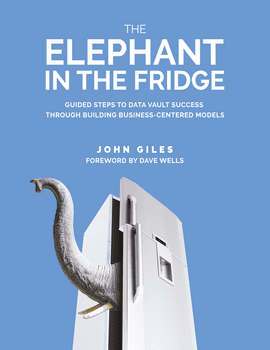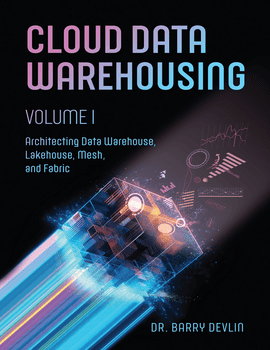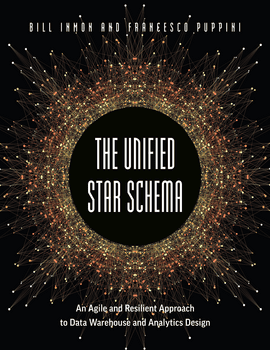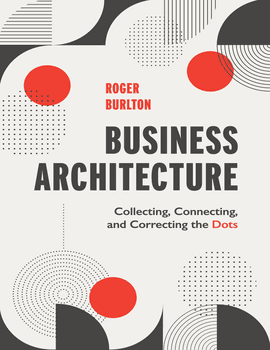Bill Inmon’s Data Lakehouse Collection
Bill Inmon’s Data Lakehouse Collection
The data lakehouse is the next generation of the data warehouse and data lake, designed to meet today’s complex and ever-changing modern information systems.
Bill Inmon, the “father of the data warehouse,” has written 60 books published in nine languages. ComputerWorld named Bill one of the ten most influential people in the history of the computer profession.
A Methodology for Building the Data Lakehouse: Setting the Stage
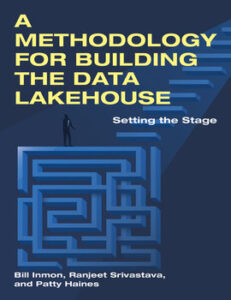
The data lakehouse is the next generation of the data warehouse and data lake, designed to meet today’s complex and ever-changing analytics, machine learning, and data science requirements. This book covers the essential topics prior to building the full methodology for the data lakehouse.
Learn about the features and architecture of the data lakehouse, along with its powerful analytical infrastructure. Appreciate how the universal common connector blends structured, textual, analog, and IoT data. Maintain the lakehouse for future generations through Data Lakehouse Housekeeping and Data Future-proofing.
Incorporate data catalogs, data lineage tools, and open source software into your architecture to ensure your data scientists, analysts, and end users live happily ever after. Deep dive into one specific implementation of a data lakehouse: the Databricks Lakehouse Platform.
About Ranjeet
Ranjeet is a Data and AI pro who loves solving real-world data problems. He designed many data-intensive applications and products while working with Oracle, GE, iSOFT, LTIMindtree, Softran, CRIS, etc. He has four IPs in Modern Cloud-based Data Management methodologies and Microservices Design Patterns. He has authored six books on data and analytics modernization and monetization space, published in four languages. Ranjeet is a passionate learner, researcher, and a great contributor to the Data and AI community.
About Patty
Patty Haines is a senior level data practitioner and advisor providing solutions to customers’ information needs for 25+ years. She is an expert in areas concerning data and the management and integration of data. She sees data, both structured and unstructured, as key assets a company has to utilize, manage, and protect. Patty focuses on users ensuring data is transformed and available to provide value to the business community. She continues to help her customers progress down the path of becoming data driven.
The Data Lakehouse: The Bedrock for Artificial Intelligence, Machine Learning, and Data Mesh

This book shows you how to construct your data lakehouse as the foundation for your artificial intelligence (AI), machine learning (ML), and data mesh initiatives. Know the pitfalls and techniques for maximizing business value of your data lakehouse.
In addition, be able to explain the core characteristics and critical success factors of a data lakehouse. By reviewing entry errors, key incompatibility, and ensuring good documentation, we can improve the data quality and believability of your lakehouse. Evaluate criteria for data quality, including accuracy, completeness, reliability, relevance, and timeliness. Understand the different types of storage for the lakehouse, including the under-utilized yet extremely valuable bulk storage.
There are three data types in the data lakehouse (structured, textual, and analog/ IoT), and for each, learn how to build a robust foundation for artificial intelligence (AI), machine learning (ML), and data mesh. Leverage data models for structured data, ontologies and taxonomies for textual data, and distillation algorithms for analog/IoT data. Learn how to abstract these data types to accommodate future requirements and simplify data lineage. Apply Extract, Transform, and Load (ETL) to create a structure that returns the answers to business problems. The end result is a data lakehouse that meets our needs.
Speaking of human needs, learn Maslow’s Hierarchy of Data Lakehouse Needs. Next explore data integration geared for Al, ML, and data mesh. Then deep dive with us into all of the varieties of analytics within the lakehouse, including structured, textual, and analog analytics. Witness how descriptive data, data catalog, and metadata can increase the value of the lakehouse.
We conclude with a detailed evolution of data architecture, from magnetic tape to the data lakehouse as a bedrock foundation for AI, ML, and data mesh.
About Dave
David Rapien is an Associate Professor – Educator of Information Systems and Business Analytics at the University of Cincinnati’s Lindner College of Business. Along with teaching for over 25 years, Dave has developed and managed large-scale data integration systems in the Sports Scheduling, Medical, Insurance, Banking, Legal, Horse Racing, and School Administration industries. Dave, his wonderful wife, and four accomplished children enjoy family vacations, visiting each of our 50 states, and small family parties of around 200 people when you only include brothers, sisters, and their kids.
About Valerie
Valerie Bartelt earned a PhD in Information Systems and a MS in business from the Kelley School of Business, and a MS in Immersive Mediated Environments from Telecommunications, all at Indiana University. She is a recipient of a $775,775 Human Resources and Services Administration (HRSA) grant for implementing a health information exchange system in rural health care facilities located in South Texas. Valerie’s research interests primarily involve decision-making using information communication technologies and issues surrounding information communication technology use and adoption.
The Data Lakehouse Architecture

Learn how the data lakehouse is designed and architected to meet today’s complex and ever-changing analytics, machine learning, and data science requirements. In the bestseller, “Building the Data Lakehouse”, you learned about the features of the data lakehouse, along with its powerful analytical infrastructure. This book is the architectural companion to “Building the Data Lakehouse”. Appreciate the strategic approaches and challenges with including structured data, text, and IoT/analog readings within the same analytical environment. Know the steps to create the data lakehouse canonical model, and the dynamic processing necessary to satisfy the most demanding business analysts and data scientists. Understand the modern cloud data storage cost-saving methodology through Data Future-proofing. Experience a new paradigm of Micro Repository in microservices architecture and advanced security to ensure your data lakehouse delivers business value for generations.
About Ranjeet
Ranjeet is known for his contribution to Data & Analytics, Product Engineering and Enterprise Architecture over the last two decades. He has a few IP and trademarks in data management and microservices design patterns. He has authored four books in three languages. As Chief Architect and Vice President of Coforge, he helps his customers to exceed their business expectations in many critical, data-intensive, large-scale, complex, and multi-dimensional projects.
Rise of the Data Lakehouse: Building the Data Lakehouse, 2nd Edition
 The data lakehouse is the next generation of the data warehouse and data lake, designed to meet today’s complex and ever-changing analytics, machine learning, and data science requirements. Learn about the features and architecture of the data lakehouse, along with its powerful analytical infrastructure. Appreciate how the universal common connector blends structured, textual, analog, and IoT data. Maintain the lakehouse for future generations through Data Lakehouse Housekeeping and Data Future-proofing. Incorporate data catalogs, data lineage tools, and open source software into your architecture to ensure your data scientists, analysts, and end users live happily ever after. Deep dive into one specific implementation of a data lakehouse: the Databricks Lakehouse Platform.
The data lakehouse is the next generation of the data warehouse and data lake, designed to meet today’s complex and ever-changing analytics, machine learning, and data science requirements. Learn about the features and architecture of the data lakehouse, along with its powerful analytical infrastructure. Appreciate how the universal common connector blends structured, textual, analog, and IoT data. Maintain the lakehouse for future generations through Data Lakehouse Housekeeping and Data Future-proofing. Incorporate data catalogs, data lineage tools, and open source software into your architecture to ensure your data scientists, analysts, and end users live happily ever after. Deep dive into one specific implementation of a data lakehouse: the Databricks Lakehouse Platform.
About Ranjeet
Ranjeet is a leader in Data & Analytics, Product Engineering, and Enterprise Architecture. He has a few IP in Data Management and Microservices Design Patterns. He has authored five books in four languages. As Chief Architect of a MNC, he helps enterprises exceed their business expectations in many critical, data-intensive, and multi-dimensional projects. Ranjeet is a passionate learner, researcher, and mentor to various organizations and technical forums.
Faculty may request complimentary digital desk copies
Please complete all fields.

